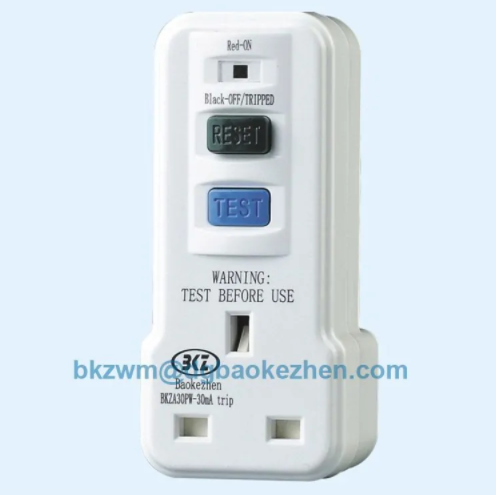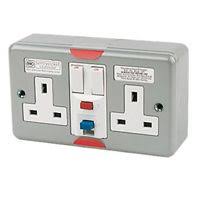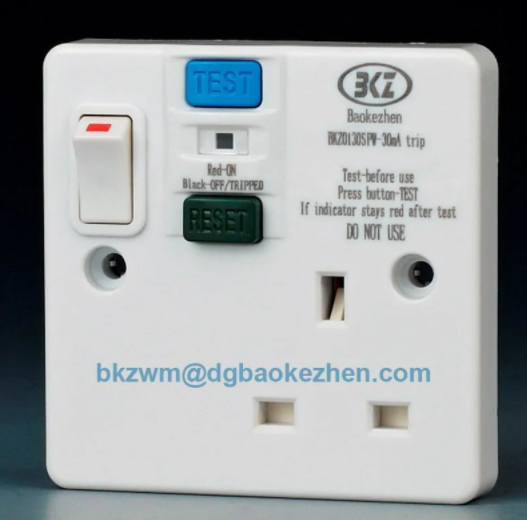Do All Home Sockets Need RCD Protection?
Whether all sockets need RCD protection is one of the most popular questions BAOKEZHEN is asked. In this blog we will look at the wiring regulations for RCDs and which sockets need RCD protection.
Whether all sockets need RCD protection is one of the most popular questionsVFD is asked. In this blog we will look at the wiring regulations for RCDs and which sockets need RCD protection.
1. Wiring Regulations
Electrical installations must comply with British Standard 7671 Electrical Installation Requirements, the 18th edition of the Wiring Regulations.
A new edition of the Wiring Regulations was published in the UK on 2 July 2018. Installations designed after December 31, 2018 must comply with the new edition, and designers may use the new edition for design purposes prior to that date. This new edition makes changes to the requirements for socket protection through the use of 30mA Residual Current Devices (RCD).

UK 13A 30mA RCD Portable Adaptor
2. RCD Protection
RCD protection provides additional protection against electric shock for users of electrical installations who may accidentally come into contact with live parts. If the appliance's enclosure is damaged, the appliance's power cord is cut or damaged, water or other liquids penetrate the appliance's enclosure, the appliance falls into water, the user pulls the plug with wet hands, or the appliance malfunctions.
RCD protection can be installed on the distribution (fuse) board to provide protection for one or more sockets on the circuit. Alternatively, individual sockets can be equipped with integrated RCD protection.

3. Which sockets require RCDs
The following sockets require 30mA RCD protection to comply with the latest version of BS7671. 1.
(1) Sockets with a rated current not exceeding 32A. This means sockets rated at 2A, 5A, 13A, 15A, 16A and 32A (single phase and three phase). 2.
(2) Receptacles rated up to 32A (single-phase and three-phase) may be used to power outdoor mobile equipment. These are receptacles near exterior doors or installed outside the building. There are no exceptions.
(3) Sockets in bathrooms or other rooms with bathtubs or showers; however, sockets must be at least 3 meters from the bathtub or shower.
(4) Special outlets near swimming pools. Your electrical contractor will be able to advise you on special requirements. 5.
(5) Sockets in agricultural and horticultural premises such as farms and garden centers. Your electrical contractor will be able to advise you on other special requirements.
(6) Sockets for caravans and campsites, sockets for marinas and similar locations, sockets for temporary installations, amusement rides, stands, amusement parks, and circuses.
(7) Medical premises. Your electrical contractor will be able to advise you on other special requirements for this location.
(8) Sockets for exhibitions, displays and stands, and electric vehicle charging post sockets.

4. RCDs provide additional protection
The RCD continuously monitors the current flowing into and out of the circuit. The current flowing into the circuit must be the same as the current flowing out of the circuit. If the current flowing in is different from the current flowing out, it means that some current is flowing to earth, which is called leakage. An electric shock is a current flowing through the body, and the magnitude and duration of the current will determine whether any injury is caused or whether the shock is potentially fatal. the RCD will not limit the current or voltage it protects against by limiting the amount of time any certain amount of earth leakage current can flow.

1 Gang plactic Sockets, switched BKZ0130SPW
5. Reducing the Occurrence of Tripping
It is rare for an RCD to fail such that it trips without cause or at a current lower than the typical tripping current of the equipment.RCDs are negatively evaluated for what they are designed to do, i.e., to trip if they see an unacceptable ground leakage current due to a hazardous condition.
The possibility of false tripping can be reduced by taking one or more of the following measures
(1) Instead of a single RCD protecting multiple circuits, install more RCDs to protect fewer circuits.
(2) Instead of using RCDs or RCBOs to protect circuits, use sockets with integrated RCDs instead of regular sockets.
(3) Eliminate plugs and sockets by connecting critical parts of the equipment directly to switch fused connection units or isolators.
(4) To reduce the risk of power transients, install surge protection devices at the source of the power supply and at the distribution board.
(5) Ensure that the sealing of all terminals does not reduce terminal continuity.
Please feel free to contact us to buy them, we welcome your inquiries.